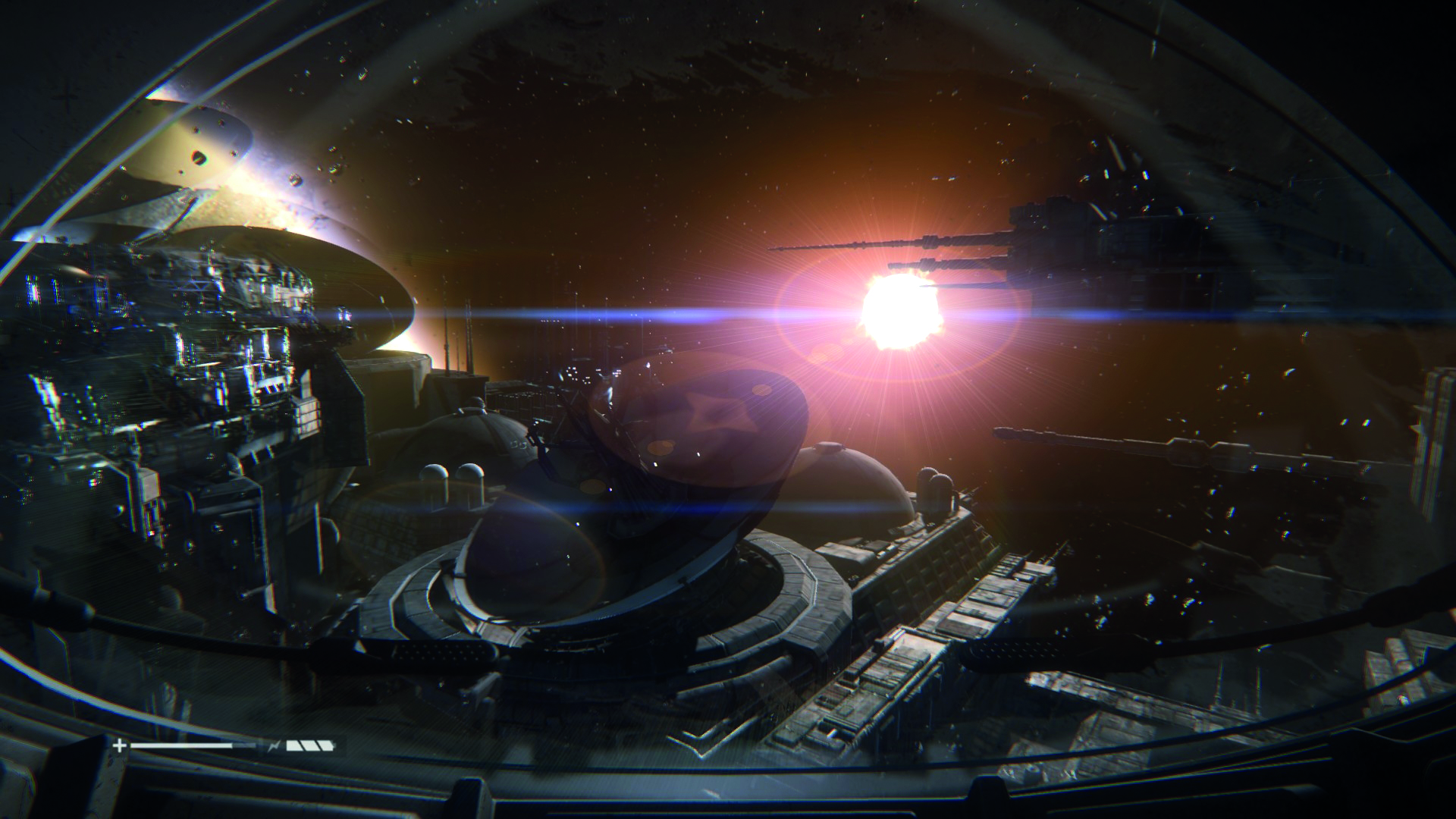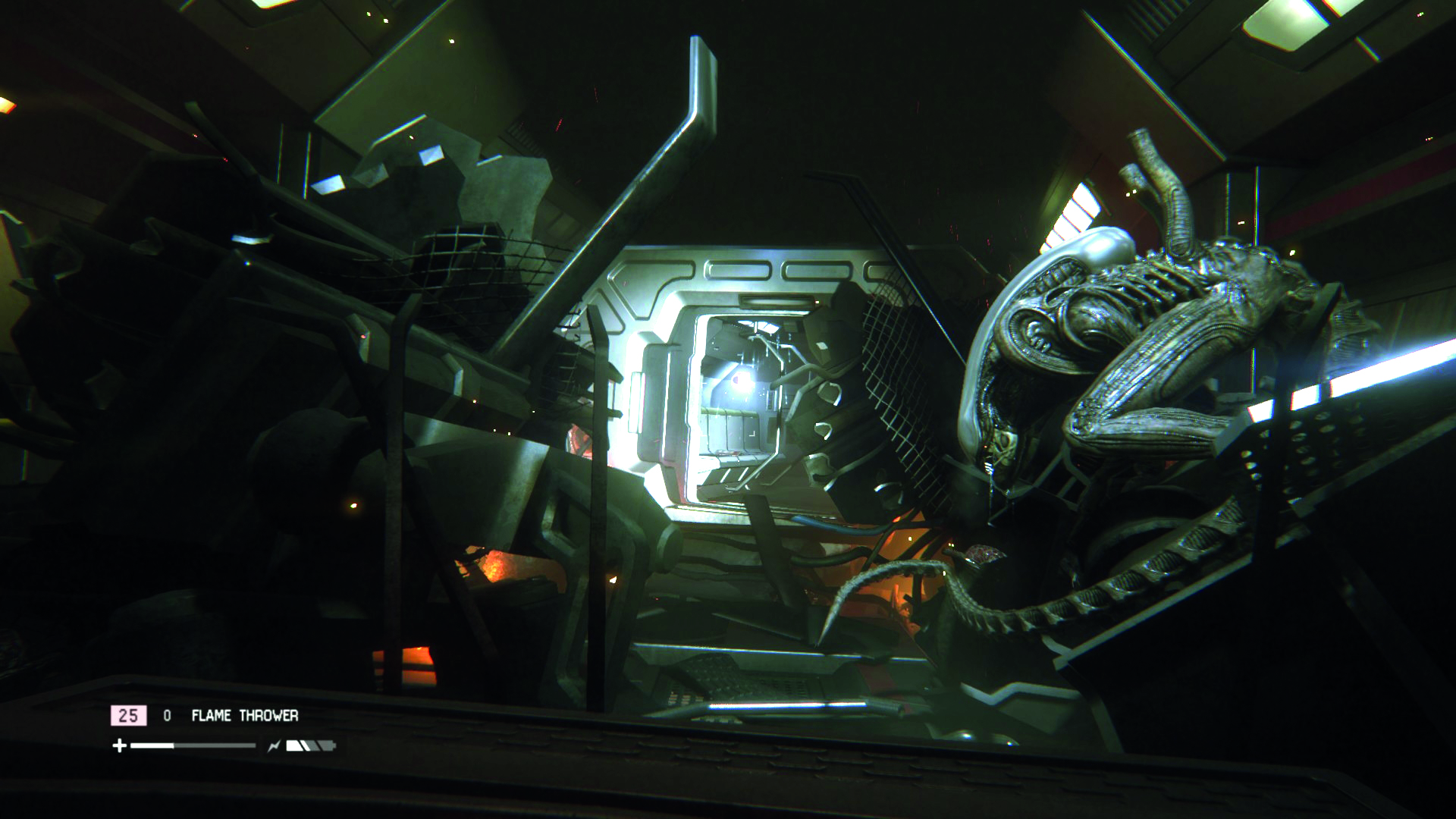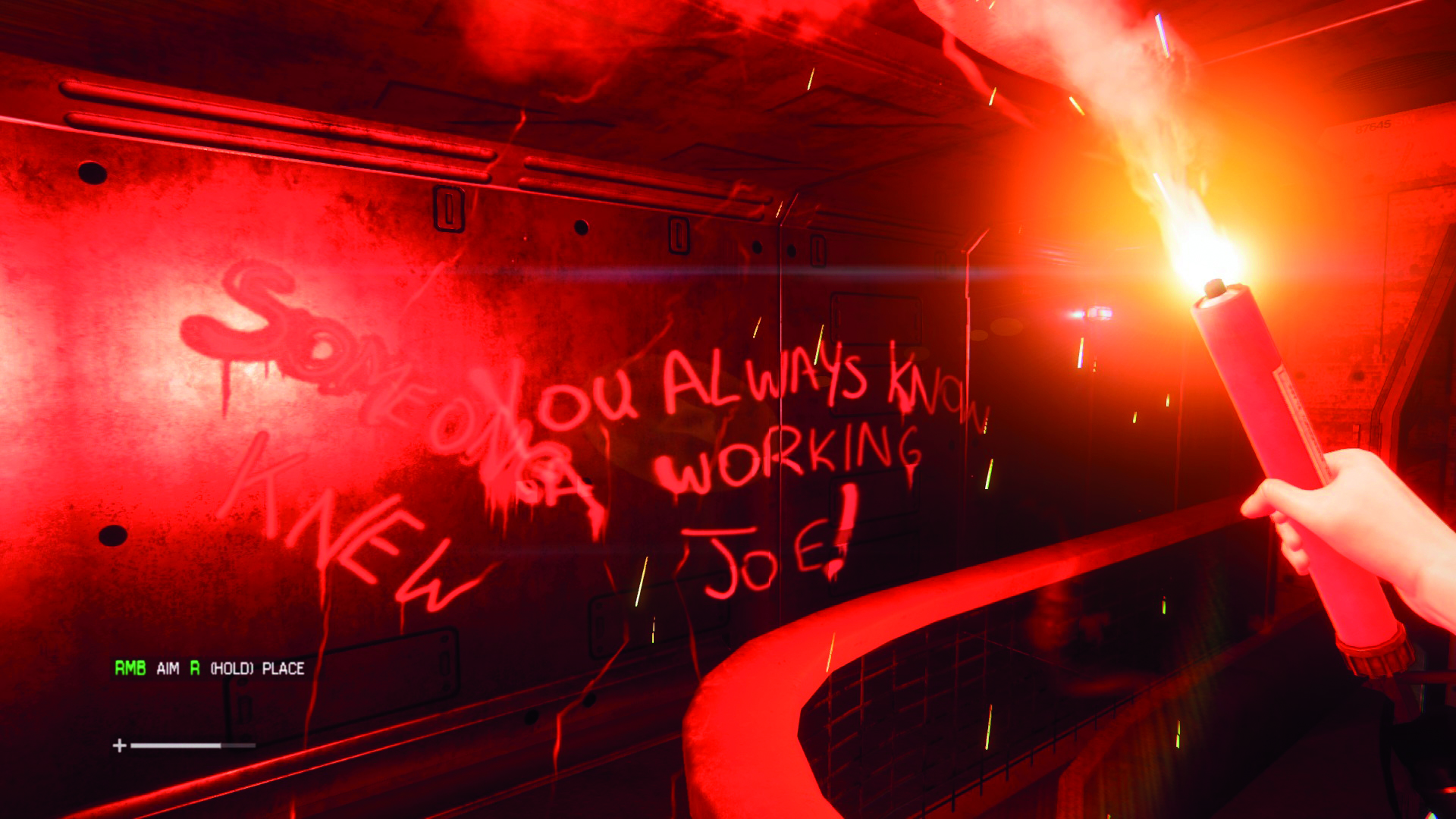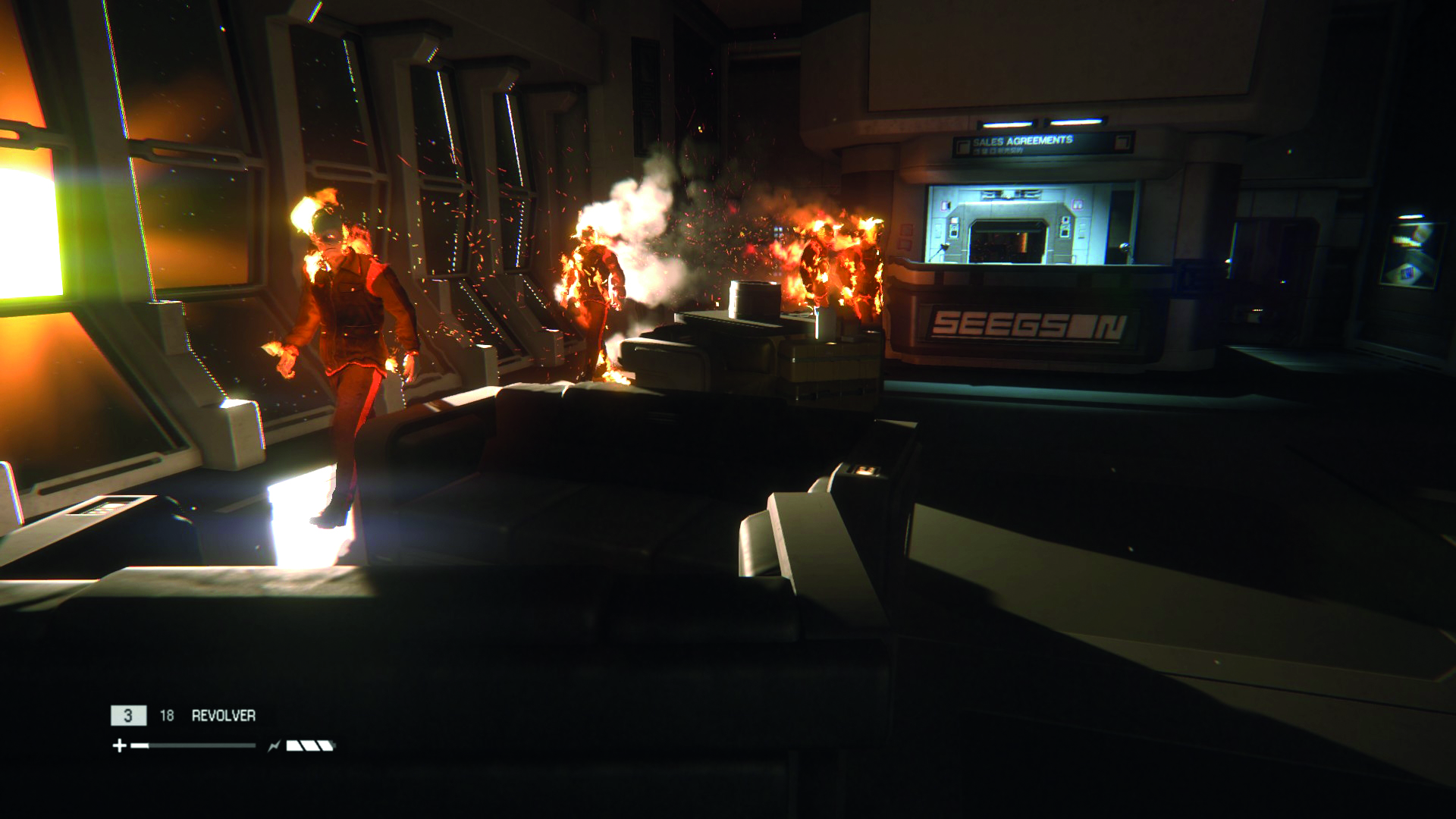Alien: Isolation is still a terrifying audiovisual masterpiece
How Creative Assembly made the scariest Xenomorph yet.

Alien's Xenomorph is one of cinema's best known monsters, but at what point does the creature become boring? The comics and movies that rose to feed Alien's hungry fandom have reduced the creature to a cartoon villain. The Xenomorph has battled Batman, Superman, and the Predator. What do you do with a monster that the audience has seen so often?
You hide it. Alien: Isolation's Xenomorph hunts in the ship's vents, waiting to drop down on its prey. Directional sound cues hint at its presence, creating excruciating paranoia. Was that clunk some pneumatic operation of the space station? Or the creature moving just above the ceiling panels? Then, when the monster finally descends it uncoils gracefully, enormous and utterly terrifying.
Creative Assembly chose to adapt the Xenomorph from the very first film, before it became a drone in a hive army. This thing is eight feet tall, and you can tell from the thudding of its footsteps that it's heavy. That gives you a clue as to where it is, which is useful as a player, but it also sells the monster's power. The first time you actually see the thing is a remarkable moment in PC gaming, and it marks the beginning of a sweaty 15-hour game of hide and seek that becomes more hellish with every passing hour.

You play as Amanda Ripley, daughter of Ellen Ripley from the first few films. You travel to the Sevastopol space station to recover the flight recorder of the doomed Nostromo from the original Alien movie. The space station has descended into chaos. A single alien's campaign of terror leaves the crew surviving in pockets, being picked off one by one.
It's hard to believe that Alien: Isolation is six years old. The station is beautifully modelled, and displays huge respect and understanding of the source material. The smooth padded bulkheads of the communal areas contrast with the harsh industrial corridors in the guts of the vessel. Important areas have the optimistic sheen of excitable '60s science fiction spaceships, emulating the Mother hub in the original Alien film. You spend most of your time going cautiously through dimly lit engineering corridors, clad in dark grates and backlit fans.
The utilitarian architecture of these vessels express Alien's pessimistic vision of the future, in which employees are contractually obliged to maintain titanic vessels to generate profit they will never see. The Sevastapol's terminal messages expose contractual disagreements and management squabbles, and an organisation that can barely come to accept that the universe's deadliest predator is on board—people are disappearing, but they fret about the next shipment going late.

It's good worldbuilding. What makes Alien: Isolation exceptional is that it applies the same thorough devotion to authenticity to every aspect of the game. The retrofuturistic computer interfaces are completely right for the universe, but also serve as beautiful little works of art all by themselves. The UI draws influence from the simple glowing green forms you see on the scanner from Alien. The UI and screen interfaces distort and flicker as though they're being displayed through an old cathode ray tube display that's nearing its end. It's perfect for a world where futuristic technology has been cobbled together from parts that are designed to function at bare minimum capacity.
Keep up to date with the most important stories and the best deals, as picked by the PC Gamer team.
Film studies
Every animator, artist, designer, writer and composer has to be pointing in the same direction to achieve such a unified and tone-perfect aesthetic. Audiovisually, the game is mostly interested in recreating Alien as a cinematic object. Post processing effects are used to create visual distortion to mimic late '70s film stock. Chromatic aberration creates the impression that you're looking at the world through the lens of the camera, rather than through the eyes of the character. Film grain and acutely observed lens flare complete the effect.
I often dislike these effects because they can create a distancing effect between me and the game world. I'm watching the game through a host of visual filters designed to mimic defunct imperfections in old movie cameras—today's digital cameras happily capture super high definition images without distortion, and directors like JJ Abrams have actually added lens flare in to dazzle the viewer.

These techniques made no sense in The Witcher 3, for example, but I forgive Alien: Isolation because its mission is to recapture the look of the 1979 movie. Those effects are part of the texture of that world. Anything else would look too clean, too neat.
It's a treat to replay a game that truly gets the universe.
I also forgive it because it's an innovative horror game in its own right. Without the Alien licence there's plenty to praise about a game that puts so much effort into its monster AI. The Alien is a responsive nemesis that adapts to your preferred methods of evading it. Once it has found you in a closet, it will start checking closets. You might get used to hiding under tables only to be terrified when it learns to explore there. Watch, too, for the dripping of saliva from an overhead vent. Many times I have been caught wandering towards my next objective only to be swept up by the creature's claws.
Sound is important too. There are small guns in the game, but you'd be a fool to use them. A single gunshot will draw the Alien from any corner of the level. Be careful when sneaking around, because if you knock something over and the Alien is near, it will come to explore.

At points the terror can turn to frustration, as though the whole game is a repetitive series of trial-and-error scenarios. The game received a wide range of scores at release, and I would attribute most of the dissatisfaction to Isolation's save system. In an era when autosaving is expected in all games, it's a bold move to build a game around static save points scattered around the level.
It can be irritating to have to navigate the same sector of the ship repeatedly, but the save system forces you to move around and take risks. Brilliantly, it takes a few seconds for your game to actually save when you activate a point. You enter a card and a series of bulbs light up before your game saves. That stops you from just legging it to a save point and instantly moving through an area, and it creates intense moments when you know the creature is searching so close that it could spot you at any moment. It creates moments when you swear at the technology under your breath—c'mon c'mon c'mon, hurry up, stupid machine. It's Ellen Ripley screaming at the ship's AI at the end of Alien.
Close encounters
Isolation preserves the Alien's menace for a long time by removing it from the game for particular sections. This relies on its underrated second class of villain—the army of Working Joe androids that have, of course, gone rogue.
The Working Joes present a different challenge to the Alien. Firstly, you can actually fight them, though doing so requires you to spend scarce crafting resources on ammo. They are a lot dumber than the Xenomorph, but they are legion, and they patrol areas in patterns.

The game juggles these two enemies to create a changing sense of pace for the first two thirds of the game. Alien: Isolation does run too long, however. Once you've experienced the horror of going into a vent system with the Alien, and met facehuggers, you've seen everything that made the series famous. The plot pushes on, though, and the plight of the Sevastapol and Amanda Ripley's quest aren't quite enough to keep the momentum going until the very end.
Isolation also exposes some of the limitations of games as a medium, which are able to capture Alien's hide-and-seek sections, and even more easily capture the space marine fantasy of the second film. The horror of Alien isn't purely in the creature itself, as masterfully designed as it is. Alien is about body horror, birth, parasites and the terrifying prospect of humans becoming victims of another creature's reproductive cycle. Alien: Isolation comes closer than any other game to recreating the look and feel of the universe, but can't explore the underlying psychology that makes the Alien truly scary. Ultimately, it's just a boogeyman. A smart, beautifully animated boogeyman, but in the end, just another videogame enemy with sharp claws.
It's hard to imagine how Alien: Isolation could have done better, though. We have seen some awful Alien games, so it's a treat to replay a game that truly gets the universe. It builds on the audiovisual design of the first film, and even enhances it. As we move through generations of ever-improving graphics engines, Isolation shows how much design and art direction matter. I can't imagine anyone making a better Alien game than this.
Part of the UK team, Tom was with PC Gamer at the very beginning of the website's launch—first as a news writer, and then as online editor until his departure in 2020. His specialties are strategy games, action RPGs, hack ‘n slash games, digital card games… basically anything that he can fit on a hard drive. His final boss form is Deckard Cain.


